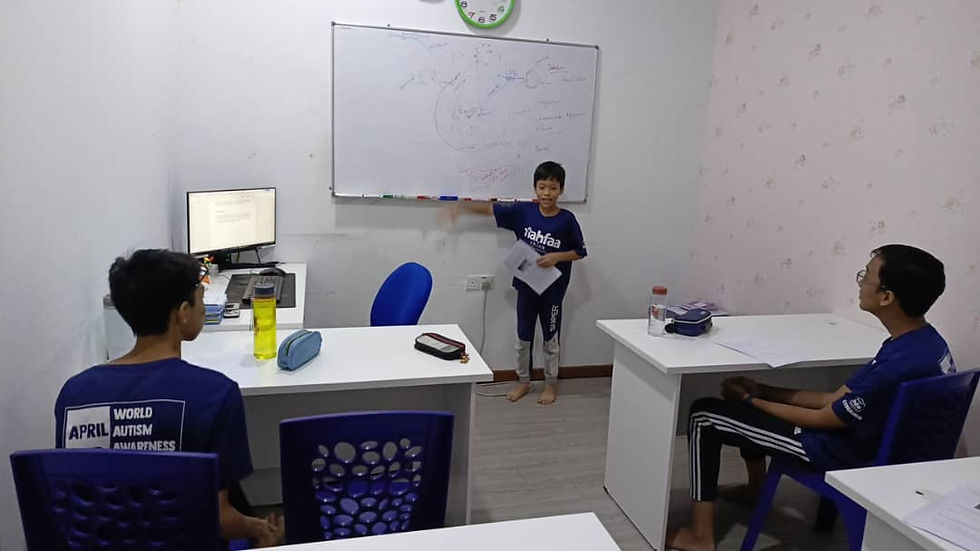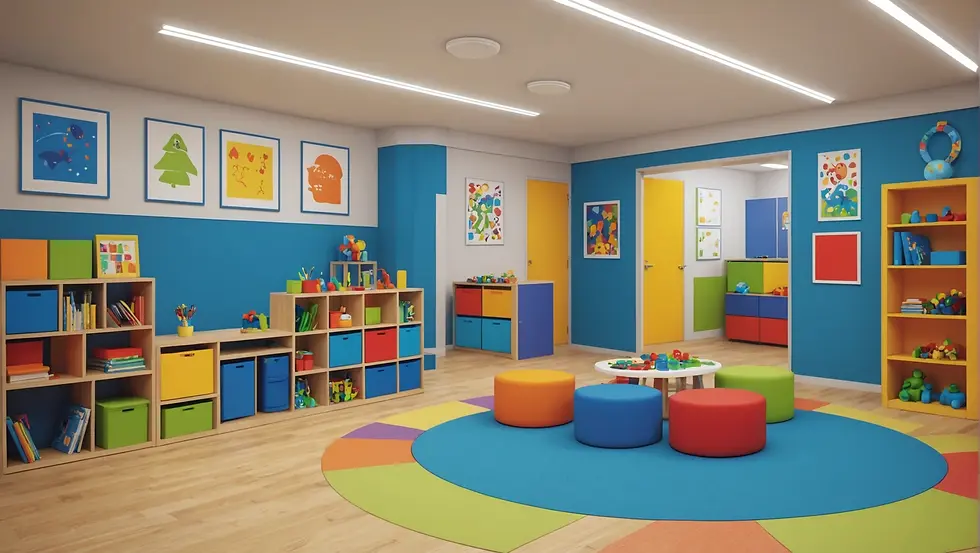Uncovering the Benefits of Safe Spaces for Autistic Learning
- nazri bajuri
- Oct 24, 2024
- 4 min read
Creating safe spaces for autistic learning is vital for nurturing the unique strengths and needs of autistic individuals. These environments foster growth, understanding, and effective learning, while significantly reducing anxiety and stress.
In this post, we will explore the specific benefits of safe spaces, how they can be created, and the positive impact they have on the educational experience for autistic learners.

Understanding Safe Spaces
Safe spaces refer to environments where individuals feel secure, accepted, and comfortable to express themselves without fear of judgment or discrimination. For autistic learners, this means having a supportive environment that accommodates their sensory and social needs.
Creating these spaces involves understanding the challenges faced by autistic individuals and implementing effective strategies to meet those needs.
Importance of Safe Spaces for Autistic Learners
Reduced Anxiety and Stress
One of the most significant benefits of safe spaces is their role in lowering anxiety and stress levels among autistic learners. Studies show that approximately 70% of autistic individuals face sensory overload, social anxiety, or difficulties in processing information.
By providing a calm, structured environment, safe spaces enable students to concentrate on their learning without feeling overwhelmed. For instance, a school implementing a quiet zone reports a 40% decrease in anxiety-related incidents among its autistic students.
Enhanced Learning Outcomes
When learners feel safe and comfortable, they are more likely to engage with their learning materials. For example, a school that introduced sensory breaks found a 30% increase in classroom participation. These safe spaces stimulate creativity and encourage self-expression, leading to improved academic performance.
A supportive atmosphere helps autistic learners build confidence, allowing them to take risks and explore new concepts without fearing negative consequences.
Improved Social Interaction
Social interaction can be particularly challenging for many autistic individuals. Safe spaces serve as platforms for developing social skills and building positive relationships.
By providing opportunities for structured social interactions, students can practice these skills in a low-pressure environment. For example, a community program that facilitates weekly social gatherings has seen a 50% improvement in social skills among participants over six months.
Creating Effective Safe Spaces

Physical Environment
The physical layout of a safe space is crucial in supporting autistic learners. Design your space to minimize sensory overload by using calming colors and soft lighting.
Incorporating quiet areas, comfortable seating, and sensory tools, such as fidget toys, helps cater to various sensory needs. For instance, schools that have introduced sensory rooms equipped with soft textures and soothing sounds report that students spend 25% more time engaged in productive activities.
Emotional Support
Creating a safe emotional environment is equally important. Train staff to understand autistic behaviors and needs, promote empathy, and practice active listening.
Building trusting relationships between educators and students encourages open communication. For example, regular one-on-one check-ins between educators and students have been linked to a 35% increase in students’ emotional well-being.
Flexible Learning Approaches
Different autistic learners have varied learning styles and strengths. Adopting flexible teaching methods can greatly enhance their learning experience.
Incorporate visual aids, hands-on activities, and technology-assisted learning to cater to diverse preferences. Offering students choices in their learning pathways empowers them, nurturing autonomy and engagement. For instance, students allowed to select project topics reported a 60% increase in enthusiasm.
The Impact of Safe Spaces on Community Inclusion
Building Acceptance
Creating safe spaces within educational institutions fosters acceptance and inclusion. When communities advocate for these spaces, they show a commitment to understanding diverse learning needs.
As autistic individuals feel safe and appreciated, they contribute positively to their communities and help promote understanding. Schools that implement these practices often report a noticeable decrease in bullying incidents, with some institutions seeing an 80% reduction.
Parental Involvement
Safe spaces encourage positive engagement from families. Parents collaborating with schools can strengthen support systems, share insights about their child's needs, and reinforce a conducive learning environment.
Parental involvement contributes to the overall success of the safe space, creating a stronger connection between home and school. Schools that actively involve parents observe a 25% increase in academic performance among students.
Examples of Successful Safe Spaces
Supportive Schools
Some educational institutions are creating safe spaces designed specifically for autistic learners. These schools tailor their strategies to sensory, social, and academic needs.
For example, a school with a dedicated sensory room equipped with calming tools and resources reports a 70% increase in student relaxation. Staff trained in autism awareness further enhance these environments, ensuring students feel secure and understood.
Community Programs
Various community organizations recognize the value of safe spaces for autistic individuals. Workshops, social groups, and recreational programs designed for autistic participants allow them to socialize and develop skills in a supportive atmosphere.
Programs focusing on community integration enable autistic individuals to engage meaningfully, often showing a 90% satisfaction rate among participants in these initiatives.
Challenges and Considerations
Resource Accessibility
One of the primary challenges in creating safe spaces is resource accessibility. Not all educational institutions or communities have the funding or facilities to establish fully functional safe spaces.
Advocacy for more inclusive education policies can help address these gaps, ensuring that every autistic individual has access to necessary support.
Continuous Training
Routine training for staff on autism awareness and best practices is essential for maintaining effective safe spaces. Educational institutions must prioritize ongoing professional development to equip educators with the knowledge and skills to support autistic learners effectively.
Final Thoughts on Safe Spaces in Education

Creating safe spaces for autistic learning is a crucial step toward fostering inclusive educational environments. By understanding the specific needs of autistic learners and implementing tailored strategies, educators can reduce anxiety, enhance learning outcomes, and promote positive social interactions.
As communities advocate for more inclusive practices, the impact of safe spaces will extend beyond the classroom and lead to a more understanding society. With increased awareness and resources dedicated to fostering these environments, the benefits for autistic individuals and their communities can be truly transformative.
Creating these spaces is not just an educational responsibility; it is a societal one. Together, we can make a lasting difference in the lives of autistic learners.
.jpg)
Comments